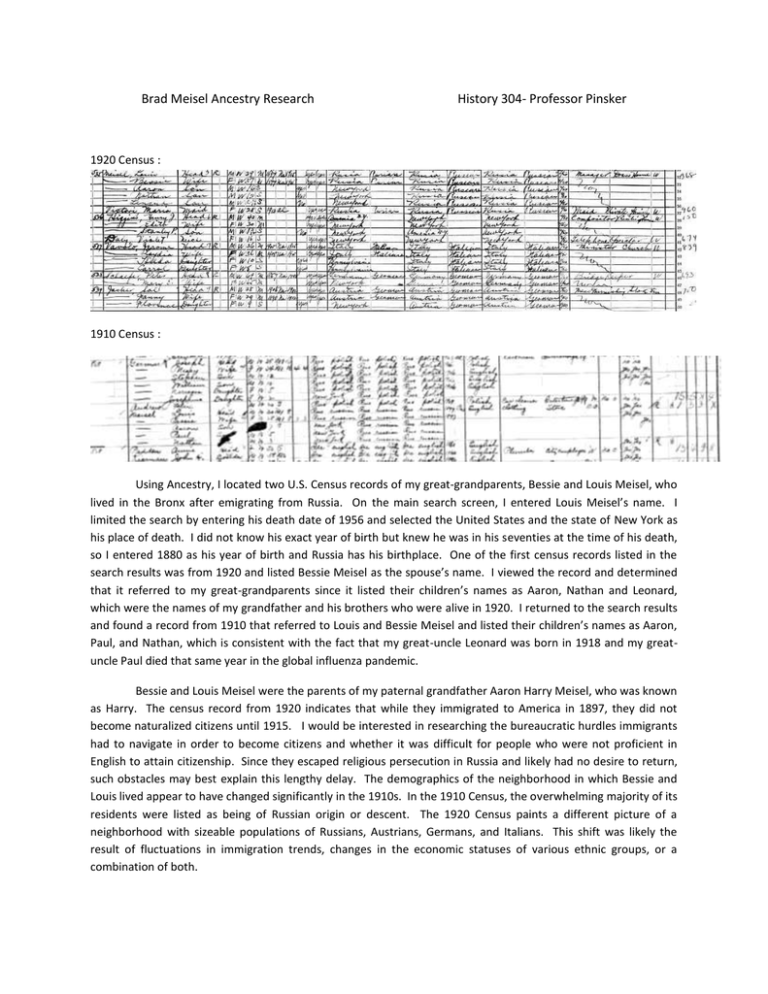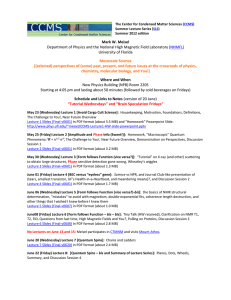Meisel
advertisement

Brad Meisel Ancestry Research History 304- Professor Pinsker 1920 Census : 1910 Census : Using Ancestry, I located two U.S. Census records of my great-grandparents, Bessie and Louis Meisel, who lived in the Bronx after emigrating from Russia. On the main search screen, I entered Louis Meisel’s name. I limited the search by entering his death date of 1956 and selected the United States and the state of New York as his place of death. I did not know his exact year of birth but knew he was in his seventies at the time of his death, so I entered 1880 as his year of birth and Russia has his birthplace. One of the first census records listed in the search results was from 1920 and listed Bessie Meisel as the spouse’s name. I viewed the record and determined that it referred to my great-grandparents since it listed their children’s names as Aaron, Nathan and Leonard, which were the names of my grandfather and his brothers who were alive in 1920. I returned to the search results and found a record from 1910 that referred to Louis and Bessie Meisel and listed their children’s names as Aaron, Paul, and Nathan, which is consistent with the fact that my great-uncle Leonard was born in 1918 and my greatuncle Paul died that same year in the global influenza pandemic. Bessie and Louis Meisel were the parents of my paternal grandfather Aaron Harry Meisel, who was known as Harry. The census record from 1920 indicates that while they immigrated to America in 1897, they did not become naturalized citizens until 1915. I would be interested in researching the bureaucratic hurdles immigrants had to navigate in order to become citizens and whether it was difficult for people who were not proficient in English to attain citizenship. Since they escaped religious persecution in Russia and likely had no desire to return, such obstacles may best explain this lengthy delay. The demographics of the neighborhood in which Bessie and Louis lived appear to have changed significantly in the 1910s. In the 1910 Census, the overwhelming majority of its residents were listed as being of Russian origin or descent. The 1920 Census paints a different picture of a neighborhood with sizeable populations of Russians, Austrians, Germans, and Italians. This shift was likely the result of fluctuations in immigration trends, changes in the economic statuses of various ethnic groups, or a combination of both.


